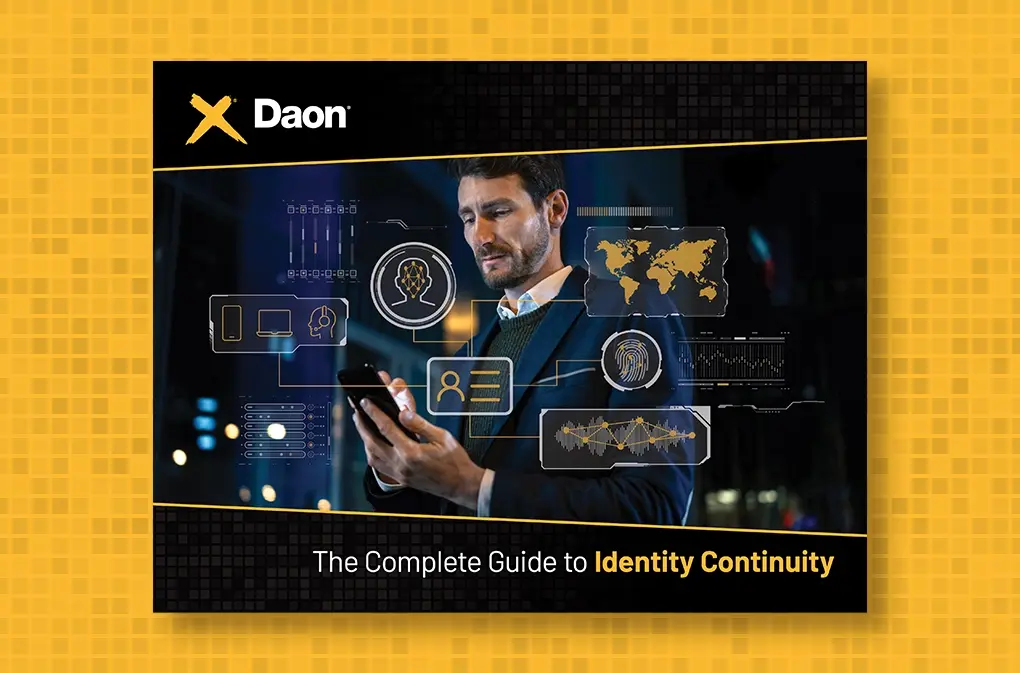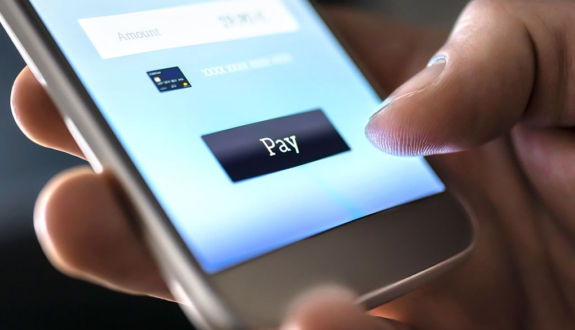How Can Digital Identity Verification and Authentication Improve Customer Experience?
Today’s customers demand both convenience and security. Here’s how to strike the perfect balance and create customer experiences that build trust, reduce fraud, and eliminate friction.
The average person has 100 passwords. Ideally, passwords are made up of 16 or more random characters, but they are often shorter and contain pieces of personal information, such as family member and/or pet names, birthdays, or addresses, because that makes them easier to remember. Security.org found that nearly two in three people still track their passwords by memorization or handwritten note.
A survey by ExpressVPN revealed that the average person spends three minutes and 46 seconds every time they perform a password reset and, for the 14% of U.S respondents who reset a password at least once a day, that adds up to 26 hours of wasted time annually. Research by NordPass found that more than 30% of people feel that recovering or resetting a lost password is very stressful.
Making typos or entering the wrong password can result in being locked out of an account for minutes, hours, or even permanently, until further action is taken – like calling the bank. A 2021 survey reported that the typical American had been locked out of an average of 10 online accounts in the past month.
It’s clear that many users find passwords to be an annoying, outdated, and unsafe way of verifying their identity to access accounts, information, and devices. Passwords are a headache to remember, a pain to reset if forgotten, and can cause a customer to be locked out of their account if typed incorrectly.
Yet passwords are a persistent part of our digital lives. A recent Daon survey found that 95% of consumers are managing more areas of their life digitally/online than they were five years ago, and that passwords were the number one security measure they used to authenticate themselves and gain access to their accounts.
For all this customer frustration, passwords aren’t even very secure. In the same Daon study, 68% of respondents said passwords were the least secure security measure. The 2023 Hive Systems Password Table estimates that an eight-character password with numbers, uppercase and lowercase letters, and symbols can be cracked in five minutes. Further, Hive found if the password had been used on multiple sites, even a 16-character password could be cracked almost instantly.
Passwords and the inconveniences they cause all add up to a negative customer experience – something that’s bad for any business in any industry. PwC found that 73% of customers “point to experience as an important factor in their purchasing decisions.” Passwords can also directly cause lost income from current customers, supported by Security Brief New Zealand reporting how “Online retailers lose millions as 1/3 of customers forget password at checkout.”
Passwords have been a defacto security measure for so long that it’s hard to imagine a digital world without them. But that’s exactly what leading organizations need to do if they want to remain competitive in the years ahead. By aligning your organization with an identity verification and authentication provider, you can rest assured that your business’s customer experiences will not only remain positive, but improve over the years to come.
What makes a positive customer experience?
A positive customer experience begins with meeting or exceeding customer expectations around security. For many customers, security is the primary concern when it comes to their relationship with businesses that hold their data or with whom they have an account.
It’s no wonder consumers have become so aware of security. Identity theft and the online fraud associated with it has risen significantly since the beginning of the pandemic, with Statista reporting that in 2022 approximately 13.5 American consumers encountered identity theft.
Corporate data breaches, which often involve bad actors using hacked or stolen credentials, consistently make headlines and affect brand trust and reputation. Almost 70% of online consumers have stopped using a service because of a publicized breach or a breach that happened to them. PYMNTS found that 65% of consumers say that a providers’ data security emphasis has a high level of impact on trust.
Today’s customers want businesses to make it hard for bad actors to hack their accounts and easy for genuine users to gain access. These seemingly disparate demands require organizations to remove the friction from customer onboarding and authentication processes.
When PwC polled Americans, 80% said speed and convenience were two of the most important elements of a positive customer experience.
This creates a challenge for businesses: they can’t simply increase security by using a more complex authentication process, because that would slow down customer account access. Twilio reported in its 2023 State of Customer Engagement study that 42% of brands said their top customer engagement challenge is finding a balance between security and customer experience.
According to CIO, “Authentication problems are the most frustrating obstacles a customer will face online, and businesses must solve them if they want to increase their revenue and competitive edge.”
A positive customer experience involves finding the balance between security and convenience – and doing that starts with using identity verification and authentication.
Improving customer experience with digital identity verification and authentication
Digital identity verification, or verification, is the process customers use to prove who they are in order to create an account or initially access a service. Authentication is the process of re-confirming that user’s identity, or the identity of a known user, when they return for a future transaction or login attempt.
Shifting from passwords to a biometrics-based digital identity verification and/or authentication system can improve both security and customer experience.
Unlike passwords, which are vulnerable because they are based on something the customer knows, biometrics verifies and authenticates a user’s identity through a biological characteristic – something related to who the customer is. Biometrics increases security by using factors like fingerprints, facial scans, voice prints, or behavioral traits, all of which are impossible to forget or steal and virtually impossible to duplicate.
Biometrics also provides a faster login experience, since the factors are based on things that the customer already has with them (like their face, voice, or fingerprint). Many customers are already familiar with and comfortable using biometrics, such as when unlocking a device with FaceID or activating a virtual assistant with their voice.
Benefits of digital identity verification and authentication
Both customers and businesses experience benefits when using biometrics for digital identity verification and authentication instead of knowledge-based factors (like passwords). These digital identity benefits include advanced security, improved customer experience, and reduced costs.
Advanced security
Better security begins with the digital identity verification process, which takes place when a customer opens an account, or onboards. Biometrics provides a more secure way for customers to establish their identity and access their account in the future (known as authentication). For businesses, using biometrics-based digital identity verification increases the likelihood that the person opening the account is truly who they claim to be, especially since biometric templates, even if somehow accessed, are impervious to reverse-engineering by a fraudster.
To accomplish this, a typical onboarding process requires a new customer to provide a government-issued ID with a photo on it, along with a selfie captured in-app. AI-powered liveness algorithms check the selfie to confirm it’s not a photo taken earlier or a still image from a video (tactics used by bad actors known as presentation attacks) and verify that the person in the selfie and the ID are the same. Identity proofing also checks identity data captured (like name, address, phone number, etc.) during the onboarding process against 3rd party watchlists to ensure the identity being presented is genuine and belongs to a real, established person.
During onboarding, the biometric factors that can be used for future access via the user’s device are also established. These can include a face print created from their selfie, a fingerprint, a voice print, or even behavioral biometric factors.
These factors can be combined and customized to provide customers with the most personalized authentication experiences possible. When a user returns for future access, all they have to do is take a selfie, scan their fingerprint, or speak a key word.
Improved customer experience, acquisition, and retention
Digital identity verification and authentication fosters fast and convenient account access – anytime, anywhere, for any user. And with biometrics, there’s no credentials for the user to find, remember, forget, or reset.
Customers will experience a dramatic difference in both ease and speed – a welcomed departure from not only passwords, but the ever-common one-time password (OTP) authentication that many companies use.
Reduced costs
The harder it is for customers to open an account, the more likely it is they’ll abandon the process. This is supported by a finding from MeridianLink that states how 48% of consumers who experienced digital friction during onboarding took their business to a different bank. Businesses who make onboarding and account access easy and secure through digital identity verification and authentication are more likely to acquire new customers and retain them, thus avoiding churn and the costs associated with lost business. Making account opening and access convenient means saving money, preserving brand reputation, and building customer loyalty.
Customer experiences that create lasting trust start with biometrics
Daon’s Zero Trust Consumer report found that 81% of the respondents who were willing to take extra measures to prove their identity were willing to use face or voice recognition when accessing their accounts.
Biometrics-based digital identity verification and authentication offers both the secure access customers expect and the convenience they want.
Learn how we can help your organization use biometrics to create positive customer experiences that last with our identity verification and authentication solutions.








